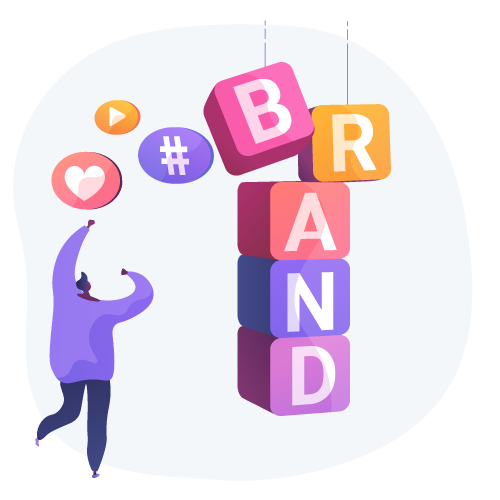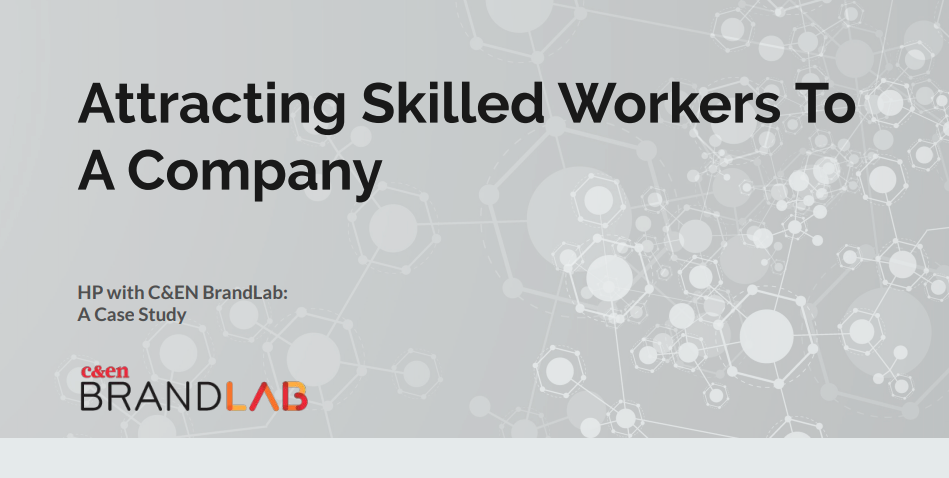Whether you’re in a high-growth commercial science company, an academic research center or somewhere in between, the success of your organization is contingent upon attracting and retaining the right team. Just like any relationship, the strength of the connection between an employee and employer is all about alignment: The values and mission of the organization need to be lived by the individuals. The closer the alignment, the stronger the bond and shared goals.
Ensuring alignment starts long before that first job post or candidate interview. It begins by defining what makes your company or institution and its internal culture unique, understanding whether your audiences believe that definition, and then sharing that brand position with the world to attract like-minded talent into your team. It’s a similar approach to the one marketers use to attract their prospects and customers.
But creating or applying a brand strategy to support recruitment efforts may not be as simple as it seems. Where does the responsibility land? With HR? With marketing? No matter the size of your organization, effective employer branding is a responsibility shared by HR and marketing teams with the blessing and involvement by leadership. Where to start?
What Is Employer Branding?
At its most basic level, branding is the reputation and perception that people have of your company as an entity. Many organizations have taken the step of codifying their brand, whether they realize it or not. But formally, the ethos of a company may be outlined in a brand platform or brand guidelines, or it may exist in a business plan or charter that articulates their values and mission. ACS, which publishes our magazine, C&EN, has its own public-facing strategic plan.
However, as marketers and communications experts know, the brand “lives” in the perception of those who interact with the organization.

Employer branding specifically is an extension of this exercise—applying the brand directly to the place of work, nature of the work, and cultural environment experienced and driven by its team members. It seeks to convey the true identity of the organization to a potential employee to help to land the right talent and create a deep sense of loyalty within the team.
A company’s employer brand is twice as likely to drive job consideration in comparison to the company brand alone, according to a recent LinkedIn whitepaper. This fact is why it is crucial to understand the difference between appealing to potential customers and potential employees. But it doesn’t mean that the goals of each should live in silos.
Creating an Employer Brand, Together
If the marketing team or C-level have outlined the overall brand, they must then work directly with the human resources team to articulate how and why that brand would be important to the individual. In partnership, HR and marketing can ensure that the employer brand is an accurate reflection of the overarching brand. You’re not only spelling out what the organization is about, but why it should matter to the employees and job seekers. Here are a few ways to get started.
- Gather and review existing brand materials: Start by organizing and reviewing existing brand materials together with HR and marketing. Pressure test the messaging and statements that describe your culture, values and mission. Ask yourself if they are current and valid, and how they apply to your employees. Adjust and organize these statements (or newly created or modified versions) into a single page framework to answer the questions of who succeeds at your organization, why they succeed, how that helps the organization to succeed, and what the desired outcomes are for the employee and employer. For the general marketing team, this can also be a valuable exercise for ensuring your overarching branding aligns with your customer. If you discover your brand positioning differs wildly between your employees and customers, find out why, and adjust accordingly.
- Ensure a strong workplace culture: Whether they know it or not, culture is often one of the first things that people notice about a company, both for job hunters and customers alike. This is increasingly the case with culture-first millennials and Generation Z employees, now comprising 50% of the workforce. A recent C&EN petrochemicals study found that 38% of the buyers who responded fell into this generation. And to further hit the point home, a 2020 Consumer Culture report found that 71% of consumers prefer buying from brands that align with their values, encouraging companies to market around a cause. Those type of marketing campaigns would greatly speak to a company’s culture, and – as we’ll get to later on – your messaging better match both internally and externally!
For recruiters, a good place to start is surveying your current employees to do a pulse check on your company culture. You can run this anonymously or through an open forum – it’s up to you to determine what your employees are most comfortable with. Depending on the outcome, you can get an idea of what is working and what changes your employees would like to see. These improvements may help employee retention rates and strengthen your connection with prospective employees as well. On the flip side, you may not have to change much, or anything at all. In which case, you can more easily tackle your outward-facing programs.
For brand and product marketers, all of this data and input from your employees could greatly impact the way you position your brand for your customers. If your employees are proud to work for your company because of product reliability and the emphasis the company places on supporting your customer service team, that’s an important anecdote you can convey to potential customers – and back up with real testimony.
- Pursue authenticity by comparing your messaging with employee feedback: While you will want to be sure that the tone of your employer branding appeals to your target audience, you need to be authentic. Not only so that you will appeal to any potential employees, but so they’ll know exactly what to expect from you when they’re hired. Many current and former employees will use various online platforms (such as Indeed, Glassdoor, or social media) to share their perspective and experience with your company. Your current employer brand will be reflected in the feedback received from these individuals.
This will be true of your external marketing campaigns too. If you begin to rave about your company’s stellar customer service, despite complaints about your internal culture, that information can and will travel to your prospective clients. Would they feel comfortable spending millions on lab equipment if they don’t have faith the teams would be there to troubleshoot your new device?

- Highlight your best employees: Spotlight your organization’s ambassadors in marketing materials and help them get excited to advocate to your target audiences for recruitment. Doing this helps you maintain engagement and motivation with these individuals and allows them to indirectly (or directly) be an ambassador for your company. Their loyalty is a reflection of your organization, and these individuals can facilitate talent acquisition through their network and positive referrals.
Your own science experts are also fantastic subjects for case studies, blog posts, and other marketing materials that can put real faces to your messaging and products. Those are the exact voices that custom content studios, like our C&EN BrandLab, will reach out to for insight into what makes your product different, more reliable, or any other important ‘hooks’ that will drive the story.
Know the Best Channels to Reach Audiences with Recruitment Purposes
Once your HR and marketing teams are better aligned and you’ve established and articulated your brand, the next step is to promote that vision through the most effective channels and tactics. It’s safe to assume that your HR department is already using a lot of digital tools, including LinkedIn. But there will always be ways to improve their use to extend the employer brand – from eye-catching graphics and engaging video content to creative campaigns and sponsored content targeting specific candidates. These are steps that must be taken with HR and marketing walking hand-in-hand.
The values and mission of your organization need to be lived by the individuals.
While we’re all well aware that LinkedIn is the largest professional network in the world, with more than 706 million users in more than 200 countries, many only use a portion of its branded recruitment capabilities. By blending creative campaigns and content with a number of additional recruiting tools on the platform, you can expand your reach to candidates that respond to the employer brand you’re expressing.
As an example, innovative genomics powerhouse, Illumina, does a great job of this with its visually distinctive company page, which highlights trending content that speaks to their employees, corporate responsibility initiatives and internal culture. Very similar opportunities exist to share employer branded content via Indeed and Glassdoor, as well as across all major social media platforms.
Niche publications also offer a nice space in which companies can highlight what makes them unique, furthering your brand and shedding light on why someone may want to work at your company or buy from your company. Take this example from HP: The company is well-defined in the printing and computing space, but many chemists may not think of them as a chemical company engaged in R&D.
With a piece of sponsored content, HP highlighted some of the chemical challenges they deal with in the printing space and entice chemists to apply with a final, straightforward message: “HP also is a chemical company.” Those applying to HP should expect a culture of science and interesting projects when they get on board.

This also raises its awareness amongst other chemists reading about the company, who may not have realized they could be a solution to their problem in the lab. Click here to review this case study of employer branding strategy and execution.
Navigating the difficulties posed by COVID-19
Showcasing a well-defined employer brand across all mediums is an important exercise during normal economic conditions, but is absolutely critical during the unprecedented race for talent created by a pandemic recession. This challenging period saw many academic and clinical research institutions issuing hiring freezes and many companies reduced workforces or entirely changed their business models in response.
The resulting environment has plunged talent into new or changing roles, while forcing others to reconsider their career goals, needs and interests. This makes 2021 a very unique time for matching the employer brand to a varied landscape.
For example, if your institution is expanding to meet new demand or is on the cusp of ending a hiring freeze, the market is about to be flush with scientific talent as a new wave of graduate students and post docs prepare to emerge and enter the workforce.
Marketing can help HR navigate this changing environment by emphasizing an organization’s strengths, such as an altruistic scientific mission, collaborative work environment, flexible team structure, or new opportunities resulting from a changing business structure or model. In fact, the very process of interviewing and on-boarding employees has become a digital exercise, creating countless opportunities for emphasizing the employer brand through creative marketing materials and content.
Parting Thoughts
All organizations serve their various constituents best by building the strongest team possible that is aligned with a clearly communicated brand. Your ideal candidates want the best in environment, opportunity, compensation and flexibility – and to understand their place in the work universe. Delivering that understanding in a compelling way will only be successful if executed through a strategic partnership between marketers and human resources professionals.


















